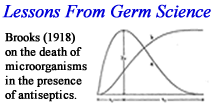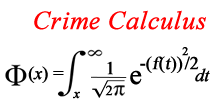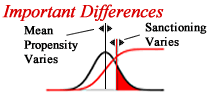Crime Rates are Sigmoid
Crime Rates are Sigmoid
If criminal propensity is normal, and sanctioning is asymmetric, then the laws of normal curve predict that crime rates should follow a sigmoid response curve with changes in propensity or sanctioning. This process has been examined in other areas of science, but has not been examined very thoroughly with crime rates. There are important implications of the sigmoid nature of crime rates that need to be addressed.

Lessons from Germ Science
Microbiologists have known for some time (cf. Brooks, 1918; Gaddum, 1933), that if the resistance to antiseptics in a population of microorganisms followed a normal distribution, and the antiseptic level was varied asymmetrically from low to high, the death rate of the microorganisms will follow a sigmoid response curve. This is essentially the same process that occurs with crime rates.

The Need for Crime Calculus
Crime rates are the result of many small events accumulating over time. In order to understand the process of crime rate creation, it is necessary to use crime calculus to study the properties of normal distributions in the presence of asymmetric selection processes.

Important Differences
There are some important differences between the germ science model and the criminological model. In the germ science model, the selection agent is changing. This would be equivalent to changes in the sanctioning level in a society. In the criminological model, researchers are interested in changes in crime rates when criminal propensity varies. The “changing propensity” model has some important differences from the “changing sanctions” model in terms of interpretation of the mathematical solution.
